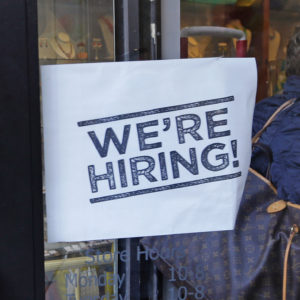Americans continue to drop out of the labor market as employment numbers reach catastrophic levels, warned a panel of experts Thursday.
The economy has lost a staggering percentage of its workforce over the decades. The number of people employed or looking for work as a percentage of the population sits at only 62.7 percent. Experts warned during the panel discussion that the numbers show a quiet catastrophe.
“I’m not trying to be hyperbolic in describing this as a quiet catastrophe or calamity,” American Enterprise Institute Economist Nicholas Eberstadt said. “From 1965 to the present we’ve seen a really wrenching decline in employment to population ratio, what we call work rates, and we’ve also seen a surge in men exiting the labor force.”
Eberstadt added the employment rate for men last year was lower than in 1940. He notes that even after adjusting for retirement and adult students there would be an additional 10 million workers if we at an employment ratio like in 1965.
“So it’s not hyperbolic to say we’re living with a sort of Depression scale problem for employment for men,” Eberstadt said. “The fastest growing segment of our working age, male population has been those that are out of the labor force over the last 50 years, growing three times as fast as the male working age population as a whole.”
Eberstadt blamed work incentives for much of the problem. Adults are less obligated to work because of things like social safety net programs. Manhattan Institute Scholar Oren Cass notes incentives are part of the problem but there are other issues which underline a critical fault with the labor market.
“I think what you have instead is a labor market that has malfunctioned,” Cass said. “The demand size is not providing wages at a level that the supply side is willing to provide the labor at. Some of that is cultural from the supply side, some of that is the nature of the safety net that provides an alternative.”
Cass adds education and automation are also adding to the problem. Employers have been more easily able to replace workers with machines and robots as technology improves. The educational system might also not be providing workers with the skills they actually need.
The panel was part of a conference on how to address poverty and economic mobility. The American Enterprise Institute, the U.S. Chamber of Commerce, the Manhattan Institute and other right-leaning organizations hosted the event to discusses the issues. It included numerous speakers and panels throughout the day.

